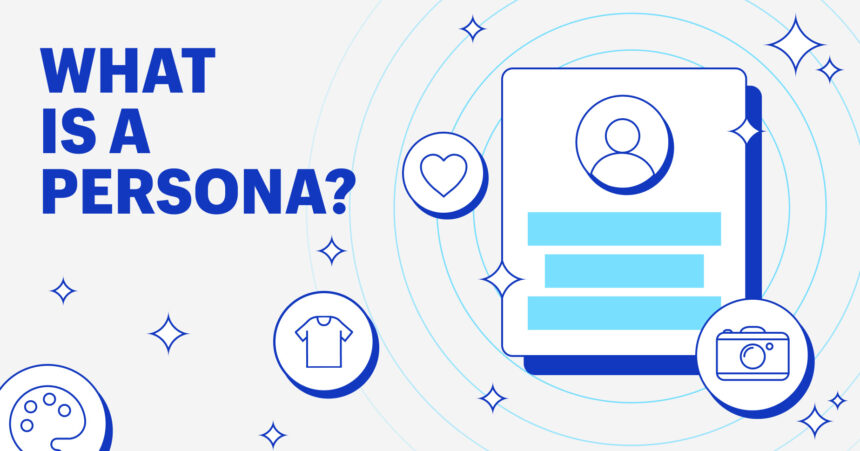Key Point
- Target users are typically defined by demographics and psychographics, which are abstract and used for high-level decision-making purposes.
- Personas are powerful tools that help you understand your customers’ values, pain points, and goals and help you make informed decisions about your products and marketing plans.
- A persona is a fictional, generalized character created specifically to target users or customers with specific characteristics and goals.
Read on to learn how to create effective personas and improve your decision-making process.
Every company has a target audience, the group of people it serves best.
This audience is typically defined by demographics such as age, gender, and ethnic background, and psychographics such as interests, hobbies, and budget. However, the target audience is intentionally abstract. These are mainly used for high-level decision making regarding the market size of the business, brand the goal.
If you want to make informed decisions about your products, marketing plan, you may need something more specific than a broad target audience to win over your customers. You need to understand their values, pain points, and goals, and make them feel like your business was created just for them.
Enter “persona”.
Personas are powerful tools for making product and marketing decisions.
What is a persona?
A persona is a fictional, generalized character that companies typically provide services to and is created to target users or customers.In fact, it is perfection The people your business serves: The problems your product solves, the goals your product or service helps you achieve, and the people whose sensibilities align with and connect with your brand.
A persona is typically defined as a single person who can be named, such as “Our persona’s name is Emma.” They have specific characteristics rather than range. For example, Emma would be 34 years old, not “31-45” or “mid-30s.” However, the most important part of a persona is usually not the demographics. It’s their goals and pain points related to your product.
Why create personas?
The purpose of creating personas is to understand your customers and end users more thoroughly so you can make better decisions for your business. It is difficult to identify specific goals for the group as a whole, such as target audience. By giving your virtual customers a name and a story, you can imagine yourself in their shoes.
User personas and buyer personas
Different teams and functional roles within a company use personas for specific reasons. However, although the use case is different, the virtual customer behind the persona should be the same. You don’t want someone whose marketing team is designing a message to reach one of her while the product team is crafting it for someone else. There are two main types of personas:
- User persona. User personas are used by design teams in either product design or UX (user experience) design. They use personas to inform design decisions. For example, if you know your persona obsessively controls their email inbox, you might prioritize features that give users control over the notifications your email app sends.
- Buyer personas. buyer persona It is used in all forms of marketing, from branding to digital. These personas help your team craft marketing messages and decide which marketing channels to leverage in your strategy.
If you have multiple products, use cases, and target markets, you can consider creating multiple personas, as each market segment is tailored to its own persona. However, in this case, it’s important to use sales/usage data to understand which personas are more important to your business (primary personas) and which are less important (secondary personas).
What makes a good persona?
Personas are all about specificity. The more you flesh out your personas as designers and marketers, the more your team will be able to create great products and run effective marketing campaigns.
For example, if a mattress company: Endy, your persona’s problem might be that “typical affordable mattresses are uncomfortable.” It helps write copy about how comfortable the mattress is, but at the end of the day, that’s only a limited amount of insight.
Be more specific when creating realistic characters. Example: “Anna lives in a big city, but she already feels like she’s paying too much in rent, so the idea of spending a month’s rent on a mattress feels excessive. At the same time, she’s already paying too much in rent. She doesn’t want to feel like she’s in college, sharing a bed with her partner, who often gets too hot. This level of detail creates more exciting marketing copy that focuses on the product’s cooling materials and makes better decisions about the overall product roadmap. This will lead to doing the following.
How to create a persona
- research customers
- Form a hypothesis based on the findings
- Testing and validation
To create personas, both product and marketing teams follow a similar three-step process.
1. Research your customers
Start by learning as much as you can about your customers and prospects. Market research Work includes individual customer interviews, focus groups, surveys, and reviews of third-party research. If your product is a digital product, such as an app, you can also find trends in user data and behavior patterns.
Customer research helps remove personal bias from the process. You may assume that customers value certain features of your product over others, but thorough research may reveal otherwise.
2. Create a hypothesis based on the findings
Once you feel you’ve collected enough data to understand your customer’s profile, challenges, and goals, start creating hypotheses about how to define personas based on your findings. You can create a short persona description that includes everything from name, problem, job title, and more. However, all details mentioned in the one-pager remain hypothetical until they can be verified through testing.
The more specific details you can add to your persona, the better.these Buyer persona example It can serve as a template to achieve the level of detail needed to be effective.
3. Testing and validation
There are many ways to test your personas. During this phase, product and marketing teams take different approaches to establish confidence in the same outcome: persona definitions.
The product team validates the persona through additional UX research, such as observing their user base interact with prototype designs and asking UX-driven questions. They may also test their hypotheses by making persona-oriented changes to the product and tracking usage data for improvements. Their goal is to see answers and data activity that validate their hypotheses about that persona.
The marketing team validates the persona definitions through quantitative test marketing campaigns. For example, they social media advertising Run campaigns targeting users representing two versions of your persona and see which performs better. Or they might target her single audience, but prepare multiple messages to see which one best conveys their problem. This can be a very effective way to prove your persona hypothesis.
Remember that your persona is based on a fictional character, so it can never be 100% true. However, the practice of creating and validating personas can help you understand your customers better. Whether you’re on a product team, a marketing team, or a business owner doing everything yourself, few things are more important than this.
Persona FAQ
How do you define personas in design thinking?
Design thinking is the practice of starting with the user when making decisions, rather than starting with the business/intent. Creating personas is inherently design thinking because it focuses on the user/buyer. There are several principles of the design thinking process that can help bring your personas to life, including prototyping and testing.
Is the persona a real person?
A persona is not a real person. This is a virtual character based on the characteristics of real customers. However, if your personas are well-written, you’ll be able to provide examples of real customers who are very similar to your personas.
What are the three steps to creating a persona?
There are three main steps to creating a persona.
1. Research your customers
2. Create a hypothesis based on the findings
3. Validation and testing
What are the different types of personas?
There are two main types of personas: buyer personas (for marketing teams) and user personas (for product teams). They are similarly defined, but have slightly different purposes.







